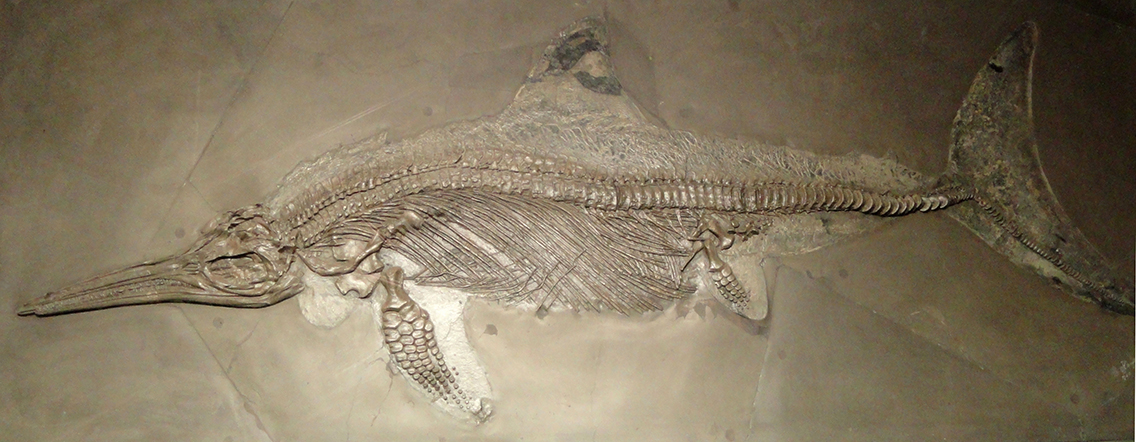
Scientists in the United Kingdom found the remains of an ichthyosaur dinosaur on Monday. The scientists unwittingly discovered the skeleton during routine maintenance at a British nature reserve and reservoir.
Researchers at Anglian Water and the Leicestershire and Rutland Wildlife Trust announced on Monday that they had excavated the remains of an extinct prehistoric reptile predator, referred to colloquially as the “sea dragon.”
The remains of the ichthyosaur were over 32 feet long, with the creature’s skull measuring an incredible 6 feet; the giant weighed roughly one ton. Scientists believe that the ichthyosaur lived around 180 million years ago during the Jurassic Period.
“It’s the most complete and larger than any dinosaur skeleton ever found here, so it’s a mega-find for so many reasons,” said paleontologist Dean Lomax, who headed the recovery of the skeleton.
“During this time period, it would have been right at the top of the food chain. It’s an ultimate apex predator, perhaps one of the biggest animals in the sea worldwide.”
Lomax explained that this specimen is exponentially larger than previously excavated ichthyosaurs:
“The first ichthyosaurs found in the Jurassic Period were a couple of meters long, between five and 10 feet, whereas this ichthyosaur, and others that have been found but are less complete, are the first that are real Jurassic giants,” said Lomax.
“It’s an interesting way of looking at the historic evolution of ichthyosaurs.”
Chinese scientists discover dinosaur embryo in storage space
Chinese scientists discovered a perfectly preserved dinosaur embryo collecting dust in a museum storeroom in 2015. Researchers published the first study into the embryo just last month, however.
The fossilized egg was found in southern China at the Yingliang Stone Natural History Museum in Nan’an when a museum employee finally noticed bones peeking out of the egg’s shell, causing them to suspect whether the egg might actually be holding a preserved dinosaur.
“The museum realized it must be an important specimen, so they contacted us to look at the egg,” says Waisum Ma, a researcher from the University of Birmingham in the United Kingdom who worked on the study. “We were surprised to see this embryo beautifully preserved inside.”
The egg is roughly 72 million to 66 million years old, and 24 centimeters long. The dinosaur’s body is curled within the 17-centimeter long egg. The remains of the embryo indicate that the specimen is an oviraptorid, a bird-like dinosaur with two legs and feathers.
Ma believes that the egg was almost immediately buried in the ground upon being laid, allowing it to be so well preserved across time:
“It is very rare to find dinosaur embryos, especially ones that are intact. We’ve never had embryos well-preserved enough to see this before.”
The egg was originally found at the Shahe industrial park in Ganzhou City before being donated to the museum over two decades ago. ”We’re not sure how it was first discovered but we guess it was something related to construction work,” said Ma.
See all the latest news from Greece and the world at Greekreporter.com. Contact our newsroom to report an update or send your story, photos and videos. Follow GR on Google News and subscribe here to our daily email!



